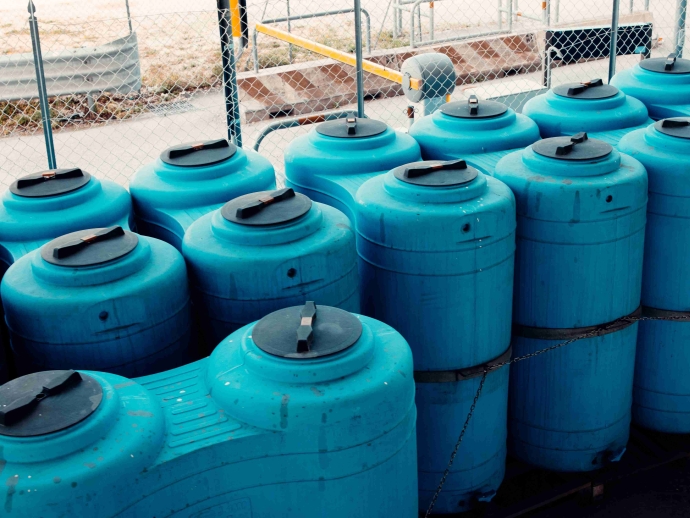Smart Irrigation Controls: How to Cut Your Outdoor Water Usage by 50%

In today's world, conserving water is more important than ever. With growing concerns over water scarcity, rising utility costs, and environmental preservation, homeowners and businesses alike are looking for efficient ways to reduce water waste. One effective solution is the use of smart irrigation controls. These advanced systems can help you save up to 50% of your outdoor water consumption by optimizing irrigation schedules based on real-time environmental data. This article will explore how smart irrigation controls work, their benefits, and practical tips for implementing them.
How Smart Irrigation Controls Work
Traditional irrigation systems often operate on fixed schedules, watering landscapes regardless of weather conditions or soil moisture levels. This can lead to overwatering, wasted resources, and increased water bills. In contrast, smart irrigation controllers automate and optimize watering schedules using various inputs, ensuring that landscapes receive only the necessary amount of water. Here’s how they achieve this:
1. Weather-Based Adjustments
Smart irrigation systems use real-time weather data to determine the appropriate watering schedule. If rain is in the forecast, the system can delay irrigation, preventing unnecessary watering. Similarly, on particularly hot and dry days, the system can increase watering frequency to prevent plant stress. These weather-based adjustments help ensure efficient water use and prevent wastage.
2. Soil Moisture Sensors
Many smart irrigation controllers integrate soil moisture sensors, which measure the amount of moisture in the soil. When the soil reaches a certain dryness threshold, the system activates watering. Conversely, if the soil has sufficient moisture from recent rainfall, the system skips the scheduled watering cycle. This prevents overwatering and helps maintain healthier plants.
3. Evapotranspiration (ET) Data
Evapotranspiration refers to the combination of water lost from the soil through evaporation and water used by plants during transpiration. By monitoring ET rates, smart controllers can calculate the exact amount of water needed to replace what has been lost. This data-driven approach ensures plants receive just the right amount of moisture without waste.
Benefits of Smart Irrigation Controls
Smart irrigation technology provides numerous advantages, making it a worthwhile investment for homeowners, businesses, and municipalities. Below are some of the key benefits:
1. Significant Water Conservation
Smart irrigation controllers can reduce outdoor water use by 20% to 50%, depending on the system and user behavior. For example, the Environmental Protection Agency (EPA) estimates that WaterSense-labeled smart controllers can save an average U.S. home around 7,600 gallons of water per year. This contributes to global water conservation efforts and ensures that water is used efficiently.
2. Cost Savings on Water Bills
By reducing water consumption, smart irrigation systems help lower monthly water bills. For homeowners with large landscapes or businesses with extensive green spaces, these savings can add up significantly over time. Additionally, some utility companies offer rebates and incentives for installing water-efficient irrigation systems, making the initial investment even more cost-effective.
3. Enhanced Plant Health and Longevity
Overwatering and underwatering can harm plants, leading to root rot, diseases, or drought stress. Smart irrigation controllers ensure that plants receive the correct amount of moisture, promoting healthier growth and reducing the need for plant replacements. Healthier landscapes also require fewer fertilizers and pesticides, further benefiting the environment.
4. Environmental Protection
Efficient water use minimizes runoff, which can carry fertilizers, pesticides, and other chemicals into local water bodies. By reducing excess watering, smart irrigation controls help prevent nutrient leaching and soil erosion, thereby protecting surrounding ecosystems. Additionally, using less water decreases the demand on municipal water supplies and reduces the energy required for water treatment and distribution.
5. Convenience and Automation
Smart irrigation systems provide the convenience of automation, eliminating the need for manual adjustments. Many controllers can be managed remotely through smartphone apps, allowing users to monitor and modify their irrigation schedules from anywhere. This is especially beneficial for frequent travelers or property managers overseeing multiple locations.
Tips for Implementing Smart Irrigation Controls
To maximize the benefits of smart irrigation technology, follow these best practices:
1. Choose the Right Controller
When selecting a smart irrigation controller, look for features such as weather integration, soil moisture sensors, and compatibility with your existing irrigation system. Some advanced models also connect with home automation systems, providing additional control options.
2. Monitor and Adjust Settings Regularly
Although smart controllers automate watering, occasional adjustments may be necessary. Check system performance, review watering history, and make necessary modifications to optimize efficiency based on seasonal changes or specific plant needs.
3. Look for the WaterSense Label
The EPA’s WaterSense program certifies irrigation controllers that meet water efficiency and performance standards. Opting for a WaterSense-labeled device ensures you are using a product designed to maximize water savings without compromising landscape health.
4. Group Plants by Watering Needs
When designing your irrigation zones, group plants with similar water requirements together. This practice, known as hydrozoning, allows for more precise watering and prevents overwatering certain areas while underwatering others.
5. Regularly Inspect and Maintain the System
To ensure optimal performance, periodically inspect your irrigation system for leaks, clogged nozzles, or misaligned sprinkler heads. Proper maintenance helps prevent water waste and ensures the system operates efficiently over time.
Conclusion
Smart irrigation controls offer a powerful solution for reducing outdoor water usage while maintaining vibrant, healthy landscapes. By leveraging real-time environmental data, these systems optimize watering schedules, preventing overwatering and minimizing waste. Whether you are a homeowner looking to lower water bills or a business owner aiming to improve sustainability efforts, investing in smart irrigation technology is a wise choice.
By implementing the best practices outlined above, you can maximize the benefits of these innovative systems, conserve precious water resources, and contribute to a more sustainable future. With advancements in smart irrigation technology, saving water has never been easier or more convenient.

